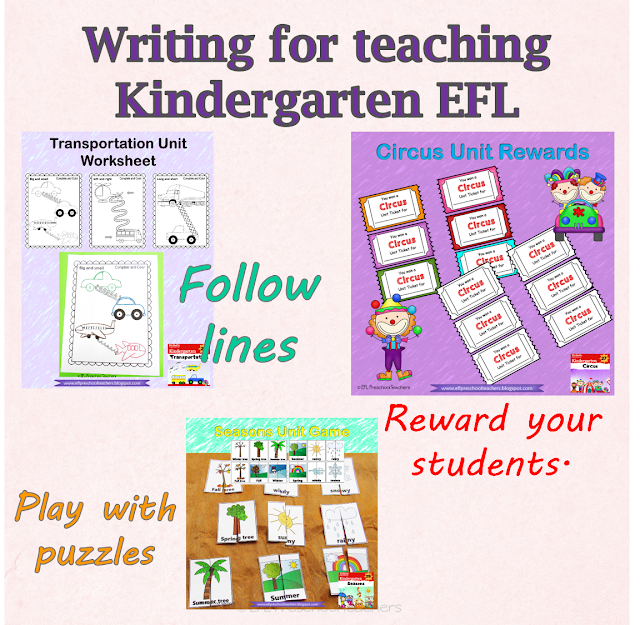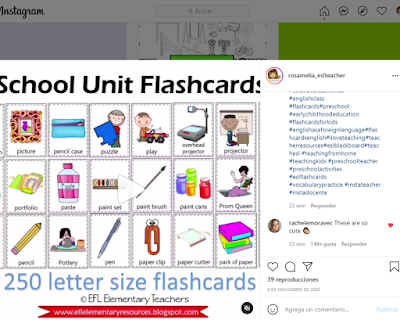Almost done with
the birthday unit. I had some worksheets from previous years and made extra
ones. I added them them to the same product from the previous blog post about
the Birthday Unit Vocabulary.
Worksheet 1. A simple worksheet to review a basic grammar point. Then, students cut the pictures and sentence and write more sentences on their notebooks.
Worksheet 2. This is a reading and coloring the picture worksheet.
I used a finger eye to read. I don’t remember where I got them. Watch the video.
Worksheet 3. Instead of color by number , it is a color by
word. After the worksheet is done the children cut it up and have the student
next to him/her glue the puzzle worksheet on the notebook.
Worksheet 4. This worksheet is useful for lower level
students.
When the students have to do a
matching word to picture I ask them to use a different color for each word.
For the numbered cupcakes, dictate the color for each one.
Teacher: Cupcake number one is red.
Worksheet 5. Dictate the color of each cake.
When you do this it helps with listening.
Teacher: Cake
number one is purple.
Have the students color the number as you dictate.
Teacher: Number one is blue.
Students cut and paste the numbers where they belong.
Once the worksheet is completed, make a
mobile by hanging the cakes in the correct number sequence.
Worksheet 6. After the worksheet is colored, students can
cut all the cakes and write a sentence describing each one on their notebooks.
Worksheet 7. Decorating a cupcake should be fun! Have the
students add anything they want such as real sprinkles to decorate their
personal cupcake.
Worksheet 8. I made two versions for this worksheet. It is
an already colored worksheet that you can place into a clear plastic sheet and
students can write using a dry erase marker.
The other version
is a normal worksheet.
Worksheet 9. Another read and color worksheet. Thinking
that the cake can be turned into a puppet for reading.
Worksheet 10 and 11. I included easier to complete worksheets for
the lower level students that you might have.
Worksheet 12. For more advanced students this worksheet is
great. After the worksheet is done, cut it all and make a match game.
Worksheet 13. After the students complete the worksheets do
a little listening as you dictate the colors of all the vocabulary words.
Teacher: Color the
lemonade yellow.
Have the students cut the sentences and pictures and glue on their notebooks as they match them.
Worksheet 14. The questionnaire. Have the students walk
around asking questions to their classmates and completing the questionnaire.
Students can write the results on their notebooks.
There will be
another blog post with more resources
for the Birthday unit. Follow me!!


























































